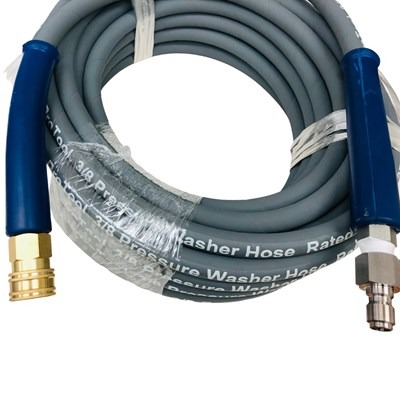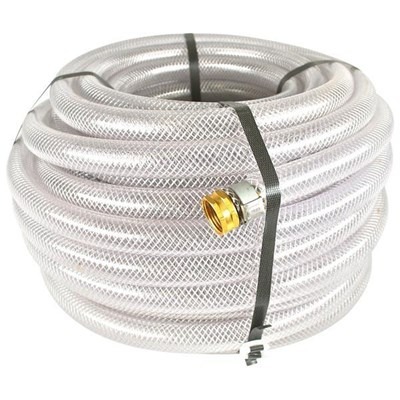Understanding Flow Loss in Hoses at Various Pressures
Understanding Flow Loss in Hoses at Various Pressures
When it comes to water delivery, whether for pressure washing or simple garden watering, the dynamics of flow through hoses at different pressures can significantly impact efficiency and effectiveness. This article will delve into the nuances of flow loss through hoses under two main categories: high-pressure scenarios typical of pressure washing and lower-pressure situations such as garden hose applications.
High-Pressure Hose Flow Loss
Pressure washing hoses operate at significantly high pressures, often around 3200 psi, to forcefully remove dirt and grime. However, the pressure and flow through a hose are inversely related; as the length or distance increases, or as the internal diameter decreases, flow rate (measured in gallons per minute, or GPM) decreases due to frictional losses.
- Hose Diameter and Length Impact: At 3200 psi, the difference in performance between hoses of varying internal diameters over the same length is stark. For instance:
- A 100ft hose with a .29 inch internal diameter might only deliver about 3 GPM.
- Increasing the diameter to .38 inches could improve the flow to about 5 GPM.
- A hose with a .500 inch internal diameter could deliver approximately 13 GPM over 100ft.
This illustrates why operators of larger pressure washers often prefer half-inch internal diameter hoses for long distances, balancing pressure loss against the need for sufficient water flow.
Low-Pressure Hose Flow Loss
At the other end of the spectrum, garden hoses typically operate at much lower pressures, around 60 psi from a tap. The flow rate here is also affected by the length and diameter of the hose but is less dramatic than in high-pressure applications.
Effect of Hose Diameter at Low Pressure: For garden watering, using a hose with a larger diameter can significantly increase the flow rate. For example:
- A 100ft long 3/4 inch diameter hose can deliver about 22 GPM at 60 psi.
- A 1/2 inch hose of the same length delivers around 8 GPM.
The Role of Hose Length and Elevation
Longer hoses and elevation changes further complicate matters by introducing additional flow resistance. For both high-pressure and low-pressure applications, longer distances and uphill routing can severely diminish the flow rate due to gravity and frictional losses within the hose.
Practical Flow Rates: A 50 PSI Table Example
At a more moderate pressure of 50 PSI, typical of many garden taps, the flow rate varies significantly with hose length and diameter:
-
25ft Hose Flow Rates:
- 1/2" Diameter: 28.0 GPM
- 5/8" Diameter: 48.0 GPM
- 3/4" Diameter: 80.0 GPM
-
50ft Hose Flow Rates:
- 1/2" Diameter: 14.0 GPM
- 5/8" Diameter: 24.0 GPM
- 3/4" Diameter: 40.0 GPM
-
100ft Hose Flow Rates:
- 1/2" Diameter: 7.0 GPM
- 5/8" Diameter: 12.0 GPM
- 3/4" Diameter: 20.0 GPM
Conclusion
The interplay between hose diameter, length, pressure, and elevation significantly affects water flow rates. Understanding these dynamics is crucial for optimizing the performance of watering or pressure washing systems. For high-pressure applications, selecting the right hose diameter and managing length is key to maintaining effective flow rates. In contrast, for garden hoses and lower pressure uses, opting for larger diameters can help maximize water delivery efficiency.



